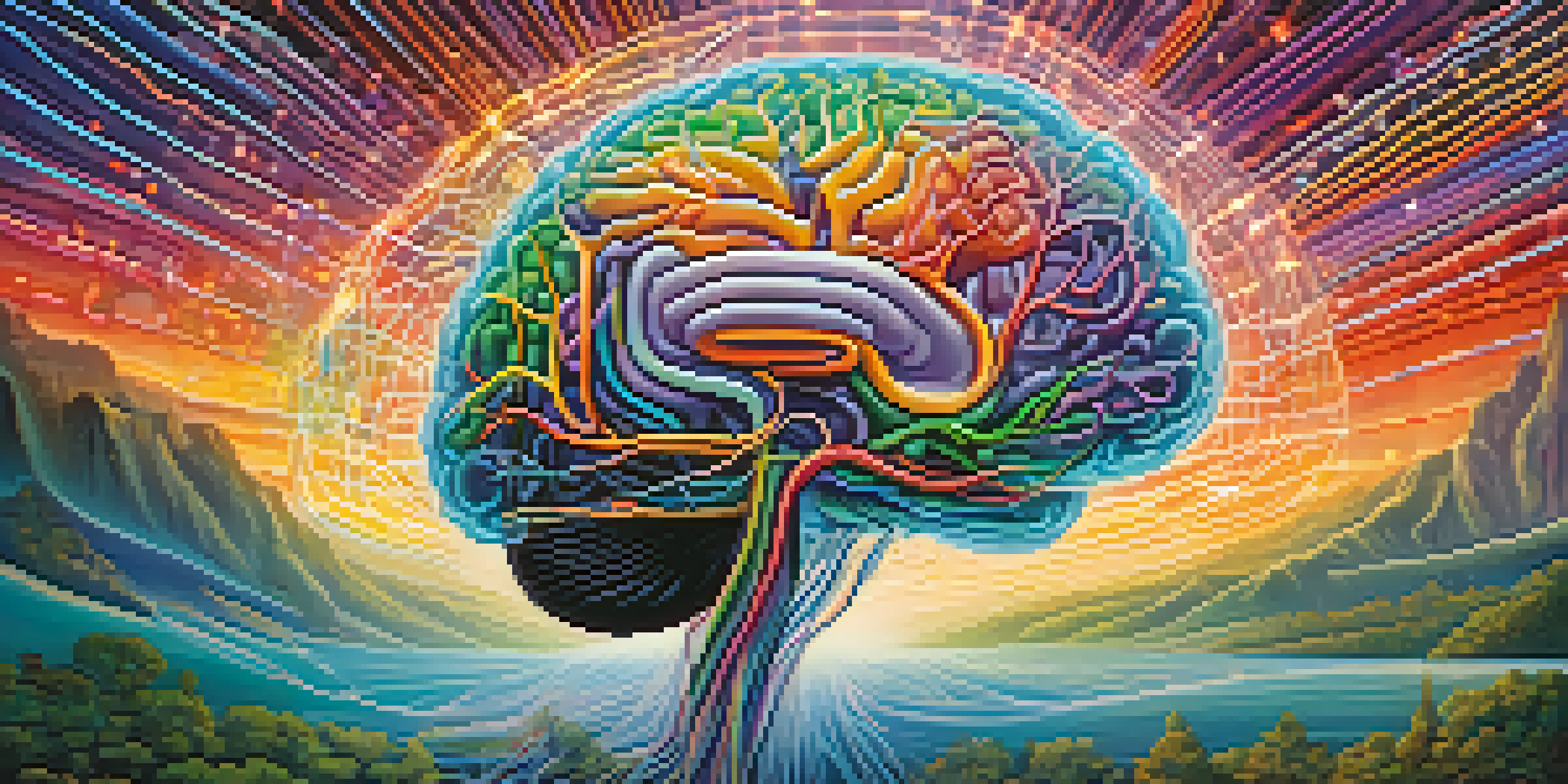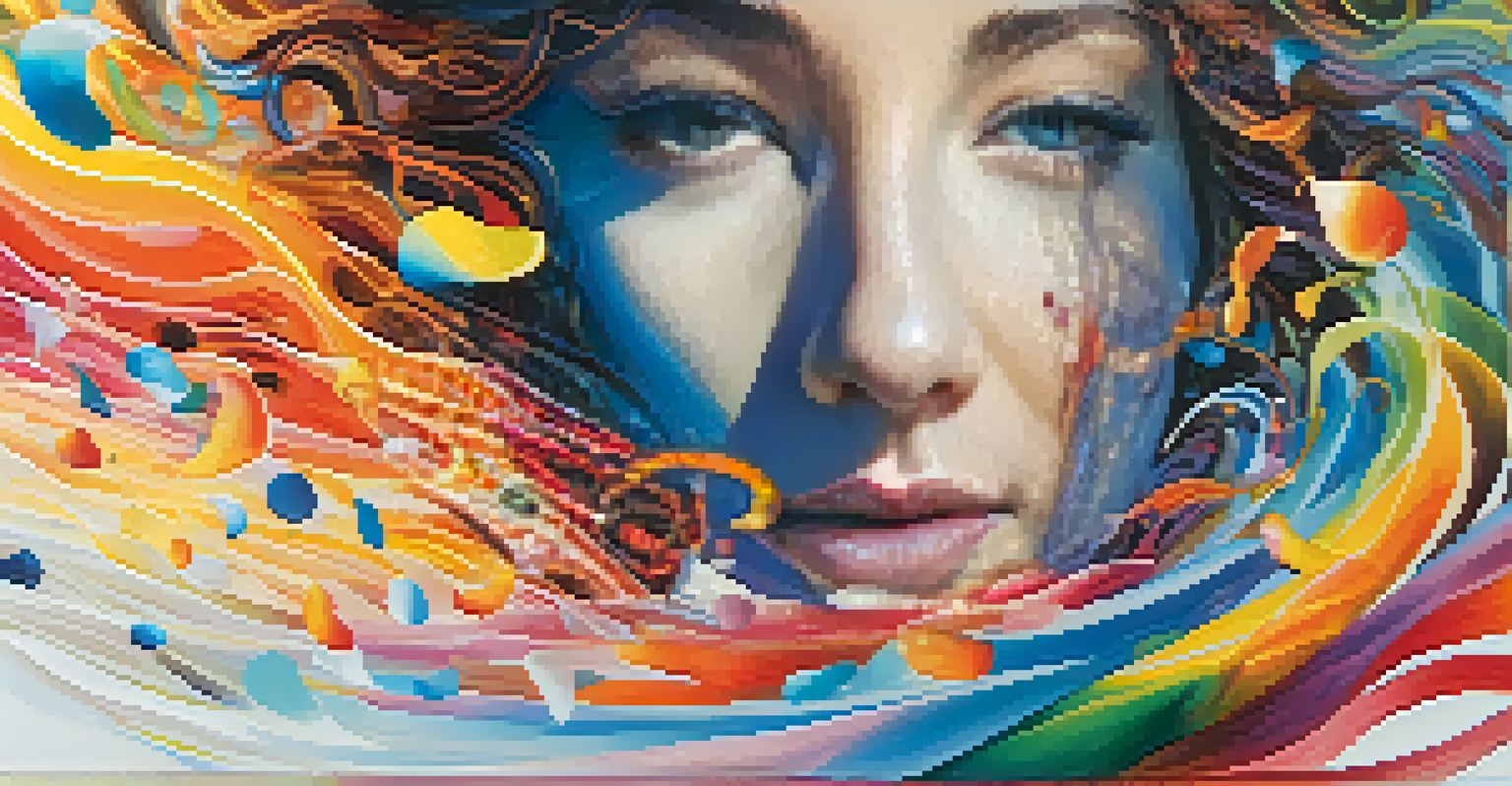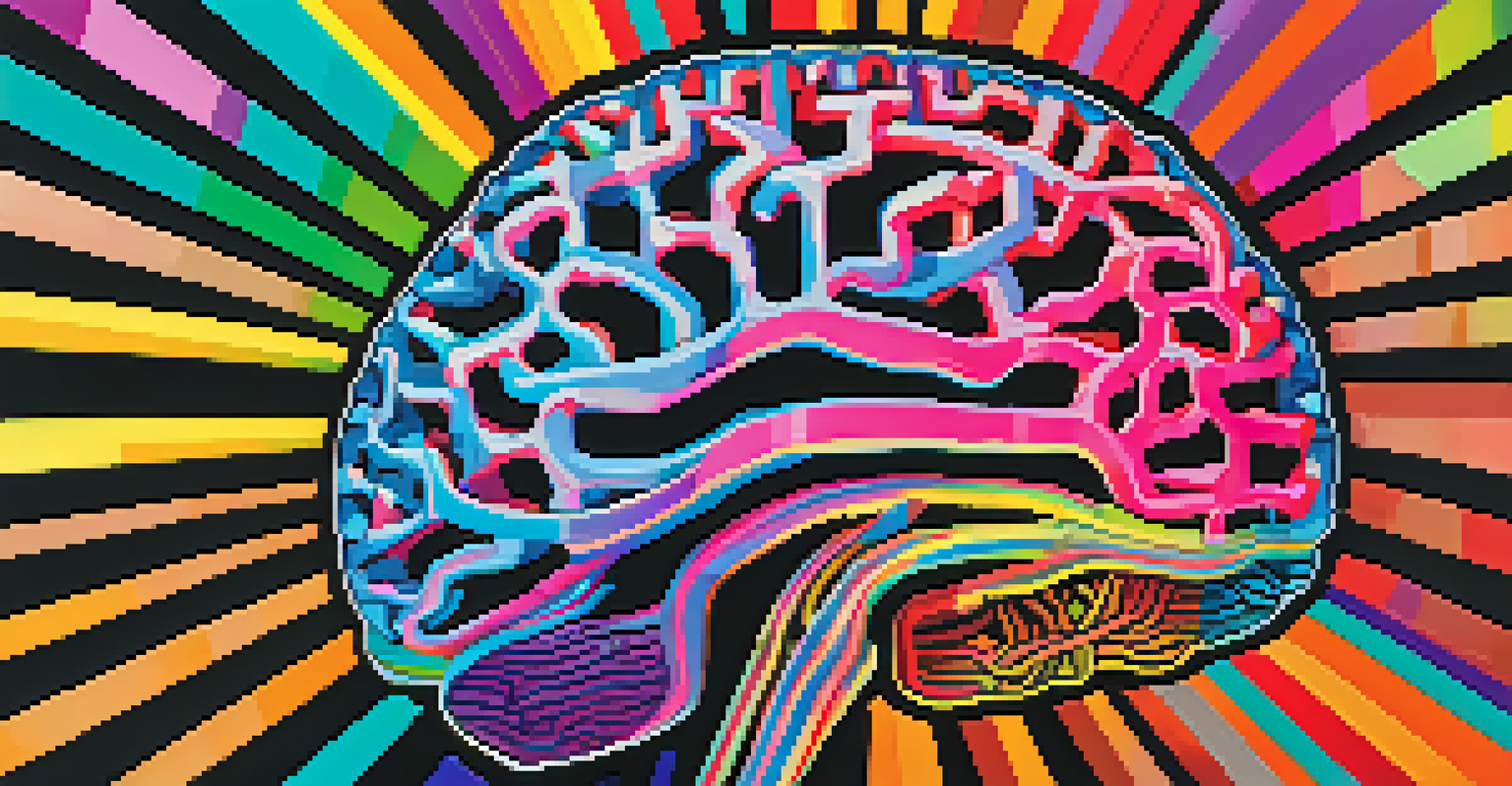How Hallucinogens Alter Cortical Connectivity in the Brain

Understanding Hallucinogens and Their Effects
Hallucinogens are substances that alter perception, mood, and various cognitive processes. Common examples include LSD, psilocybin, and mescaline. These compounds have been used for centuries, often in spiritual or therapeutic contexts, but modern science is now uncovering their impact on the brain.
The greatest discovery of my generation is that a human being can alter his life by altering his attitude of mind.
One of the most fascinating aspects of hallucinogens is their ability to induce profound changes in consciousness. Users often report vivid visual and auditory hallucinations, altered sense of time, and deep emotional experiences. This makes them a subject of great interest for neuroscientists seeking to understand how they affect brain connectivity.
Recent studies suggest that hallucinogens can lead to a state of increased cortical connectivity, where different regions of the brain communicate in unusual ways. This phenomenon opens a window into understanding consciousness and the brain's underlying mechanisms.
The Brain's Cortical Connectivity Explained
Cortical connectivity refers to how different areas of the brain interact and communicate with each other. Think of it as a complex network of roads where information travels between various towns (brain regions). When connectivity is optimal, the brain functions smoothly, allowing for efficient processing of thoughts and sensory information.

In a healthy brain, various networks work together to coordinate tasks, from basic functions like breathing to complex activities like problem-solving. Disruptions in this connectivity can lead to cognitive impairments or mental health issues. Understanding how hallucinogens alter this connectivity can provide insights into both their therapeutic potential and risks.
Hallucinogens Alter Brain Connectivity
Research shows that hallucinogens enhance communication between different brain regions, potentially influencing mental health.
Researchers use advanced imaging techniques, such as functional MRI (fMRI), to visualize these connections. By observing how hallucinogens impact these networks, scientists can glean valuable information about the brain's architecture and its adaptability.
Altered States of Consciousness on Hallucinogens
One of the most intriguing outcomes of hallucinogen use is the altered state of consciousness it induces. Users often describe experiences that feel profoundly different from their normal waking state, leading to insights or epiphanies. This altered state is believed to stem from the unique patterns of brain connectivity that hallucinogens facilitate.
The mind is everything. What you think you become.
During these experiences, the brain may show increased communication between regions that don’t typically interact, leading to a blending of sensory perceptions. For instance, some individuals report 'seeing' sounds or 'hearing' colors, a phenomenon known as synesthesia. This fascinating interplay between senses highlights how flexible and dynamic our brain networks can be.
Such changes in consciousness can also foster a sense of connectedness to oneself, others, and the universe. This aspect has been leveraged in therapeutic settings, as people often recount profound personal insights during their experiences, potentially aiding in emotional healing and self-discovery.
Research Findings on Hallucinogens and Brain Connectivity
Recent scientific studies using neuroimaging techniques have revealed significant changes in brain connectivity after hallucinogen use. For example, researchers found that substances like psilocybin can increase the connectivity between different brain networks, particularly the default mode network (DMN). The DMN is associated with self-referential thoughts and daydreaming, making it a crucial player in how we perceive ourselves.
As these studies progress, they consistently show that hallucinogens can lead to a more integrated brain state, where regions typically segregated start to communicate more freely. This could explain the enhanced creativity and novel thinking reported by users during their experiences. It’s as if the brain breaks down its usual barriers, allowing for new connections and ideas to flourish.
Therapeutic Potential of Hallucinogens
Clinical studies indicate that substances like psilocybin may effectively treat conditions such as depression and PTSD.
Moreover, these findings have significant implications for mental health treatment. Increased connectivity may help individuals with depression, anxiety, and PTSD by providing new perspectives and emotional relief, showcasing the therapeutic potential of these substances when used responsibly.
The Role of Neurotransmitters in Hallucination Effects
Neurotransmitters are the brain's chemical messengers, and they play a pivotal role in how hallucinogens affect cortical connectivity. When hallucinogens are ingested, they primarily influence serotonin receptors, particularly the 5-HT2A receptor. This interaction is crucial in altering perception and mood, leading to the characteristic effects of these substances.
By binding to these receptors, hallucinogens trigger a cascade of neurological events that enhance synaptic communication and increase overall brain connectivity. This is akin to turning up the volume on a radio, allowing for a richer and more varied audio experience. The brain's heightened state of activity can lead to intense emotional experiences and vivid hallucinations.
Understanding the role of neurotransmitters is essential for developing safe and effective therapeutic applications of hallucinogens. As research continues, scientists are keen to explore how manipulating these pathways can help treat various mental health conditions.
Potential Therapeutic Applications of Hallucinogens
The exploration of hallucinogens has opened new doors in the field of mental health treatment. With an increasing body of evidence supporting their efficacy, these substances are being investigated for conditions such as depression, PTSD, and anxiety. The unique way they alter cortical connectivity may provide a fresh perspective for patients who have struggled with traditional therapies.
For instance, clinical trials have shown promising results in using psilocybin for treatment-resistant depression. Patients often report lasting improvements in mood and outlook after just a few sessions. This indicates that hallucinogens may help reset entrenched neural pathways, allowing for healthier thought patterns to emerge.
Neurotransmitters and Hallucinations
Hallucinogens primarily affect serotonin receptors, which plays a crucial role in their effects on perception and mood.
However, it’s crucial to approach the therapeutic use of hallucinogens with caution. Continued research is necessary to understand the long-term effects and potential risks, ensuring that these powerful substances are used safely and effectively in clinical settings.
Conclusion: The Future of Hallucinogen Research
As the stigma surrounding hallucinogens continues to diminish, research into their effects on brain connectivity is gaining momentum. Scientists are poised to uncover more about how these substances can reshape our understanding of consciousness and mental health. The potential for therapeutic applications is vast, but it comes with the responsibility to ensure safe practices.
Future studies will likely delve deeper into the nuances of how hallucinogens alter brain networks and their specific impacts on different mental health conditions. By maintaining a balanced approach, researchers can harness the benefits while mitigating the risks associated with these substances.

Ultimately, the journey into the brain's depths through the lens of hallucinogens may lead to groundbreaking discoveries that transform both our understanding of the mind and the treatment of mental health challenges.